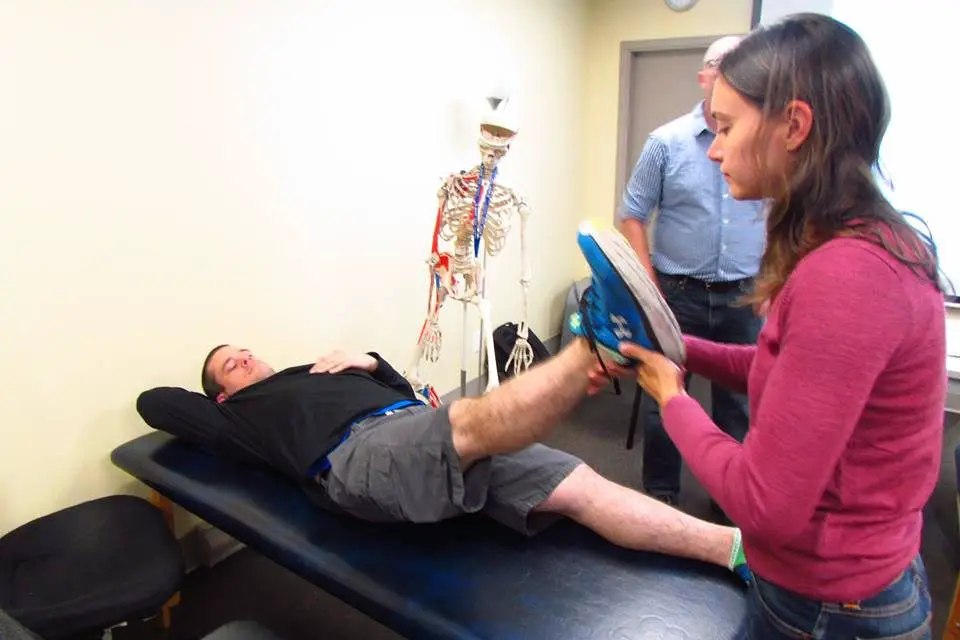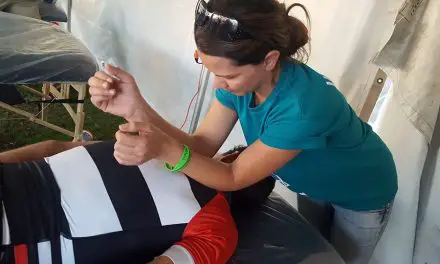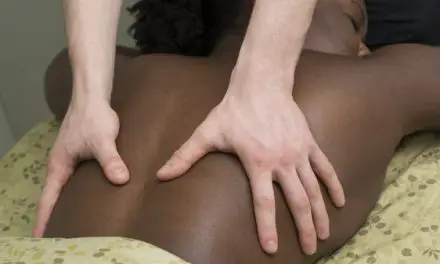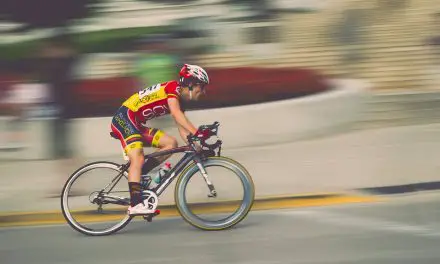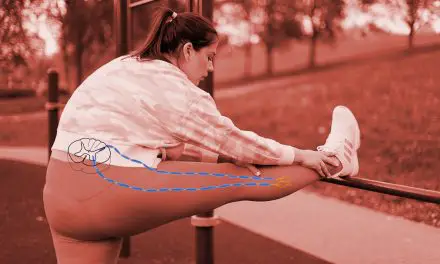Sports massage is a mixed bag of different techniques, such as effleurage, petrissage, and trigger point therapy, that are very similar to the ones found in Swedish massage. Sports massage doesn’t necessarily involve the therapist applying bone-deep pressure to the muscles that make you hiss in pain.
Currently, there’s no consensus of the definition of “sports massage.” Some massage therapists agree that it has to do more with about how they communicate with athletes and understand the nature of their specific problems than the modality itself.
“True sports massage is used only in conjunction with athletics. It is not uncommon for non-athletes to ask for sports massage,” Matthew Pardini explained in an online interview, who practiced in Honolulu, Hawaii, and was a board member of the Hawaiian Massage Association.
“Sports massage has a history of being a rough, aggressive, and painful modality. However, as our understanding of the human body advances, therapists are using less painful and more effective methods of achieving the same results for athletes at all levels.
“For myself, I would like to begin integrating on-site assessment and treatment of my athletes because the best place to understand and correct athletic complaints is in the midst of athletic performance.”
Pardini said that sports massage is often used to treat intermittent injuries, where the massage therapist addresses one or more primary complaints from the client.
“Sometimes a specific complaint is not reported, but an athlete wants to maintain optimum body mechanics or attempts to prevent injuries. Little or no lotion at all may be used and sessions are often completed with the client clothed,” he said.
Common claims about sports massage state that it can help reduce blood lactate, alleviate muscle soreness, and speed up recovery. While they sound promising, what does current scientific evidence say about these claims?
Does sports massage help improve strength and flexibility?
The number of studies on this topic is few and the results are quite iffy. Dr. Jason Brumitt, a physical therapist from George Fox University in Newberg, Oregon, cited several studies in his review that showed limited or no significant improvement in muscle flexibility after a massage session in which dynamic soft tissue mobilization (DSTM) and standard petrissage and effleurage were used.
A few studies showed some muscle flexibility improvement, but the effect was transient. In other words, the muscle returned to its pre-massage state and did not maintain its new range of motion for a long time.
For grip strength, massage may help recover muscle fatigue better than no massage at all. However, there’s no strong evidence that massage can help improve strength or performance in other movement patterns, such as Olympic lifting, squats, or sprints.
In fact, Brumitt cited one study that found female college basketball and volleyball players who received a 17-minute massage had increased their vertical jump height, yet they took longer to finish a bout of shuttle runs. There were also flaws, such as a small sample size and a lack of a control group, that made this study unreliable to draw a solid conclusion.
In 2020, a systematic review and meta-analysis by a team of researchers from the University of Sheffield pooled data from 29 sports massage and similar massage studies with a total of more than 1,000 subjects. Like previous reviews and studies, they found that massage therapy has very little to no benefits for athletic performance, such as jumping and sprinting.
However, with an additional 270 participants and seven extra studies, they found a “small but statistically significant improvement in flexibility,” but the methods behind the pool of studies were mixed. One outlier among the studies also skewed the data which makes the benefits of sports massage for flexibility seem more favorable than it actually is.
The researchers concluded, “Our meta-analysis leaves many unanswered questions. These include uncertainty over the optimum duration of massage and the lack of studies testing the effect of regular repeated massage, which might have more benefit. Given the huge number of potential massage regimens and timing, it is impossible to conclude that massage cannot improve performance if the correct timing and indication could be defined.”
Therefore, massage therapists, athletes, and coaches should be careful about claiming what massage can do.
Overall, the review found that massage may help improve flexibility for some athletes but only for a short time. For strength improvement, there’s not much effect.
Does sports massage get rid of blood lactate from muscles?
Some massage therapists believe that massage could somehow “squeegee” fluids out of their muscles or other tissues and remove compounds, such as blood lactate. This substance is produced from carbohydrate metabolism that gets recycled in your body’s energy system. But numerous studies since the 1990s have failed to support the idea that massage therapy can reduce blood lactate or increase circulation significantly.
One such study published in Medicine and Science in Sports and Exercise found that massage could impede blood lactate removal after a workout because of the compressive forces applied to the blood vessels. In fact, exercise in the form of active recovery has been shown to reduce blood lactate levels better than massage.
Related story: How the Idea Massage Can Remove Lactic Acid Out of Muscles Started?
Does sports massage decrease muscle soreness?
Massage therapy might earn second place for reducing muscle soreness when it is compared with other common but less effective techniques, such as stretching and cryotherapy.
A 2013 study published in the Journal of Strength and Conditioning Research found that elastic resistance training can relieve soreness in the upper trapezius just as well as a 10-minute massage to the same muscle. However, the effectiveness is only marginal, kind of like an aspirin that temporarily stops a headache. With two or three days of rest, the soreness usually goes away.
Does sports massage decrease risk of injuries?
There is no single method that works the best to help athletes recover from an injury. Brumitt stated that there are very little studies that investigate the role of massage in sports rehab.
However, a 2013 systematic review of several systematic reviews that was published in International Journal of General Medicine that examined a series of systematic reviews suggested that massage does have some positive effects on nonspecific low back pain. Still, the review cautioned that the lack of higher quality studies does not guarantee a positive outcome on all low back pain cases.
As for other types of injuries, there’s not much evidence that can help therapists to determine if sports massage can help or not.
What are the benefits of sports massage?
While it seems to be a no-brainer, massage therapy has been shown to help reduce anxiety and depression. Psychologist Christopher A. Moyer wrote that adults who received consistent massage had a significant reduction in depression.
Even a single massage session can tone down a person’s state anxiety, which is an experience of momentary tension or worrying. If you have chronic “bouts” of worrying, then getting multiple sessions of massage over a period of days or weeks may help.
“Why is it that the athlete feels refreshed or better after a massage? It may have something to do with biochemical markers for pain that have not been measured,” Brumitt said. He cited a study where those who received neck and upper back adjustments had higher levels of oxytocin—a hormone that gives a “euphoric feeling”—and neurotensin,—a type of protein that acts as a painkiller—than those who did not receive any adjustments.
“Could it be that this effect, the manipulation, be similar to that of the manual treatment via massage? It is possible,” Brumitt said.
For athletes, massage therapy—whether it’s done on a table or a chair—could play an important role in alleviating stress and anxiety after they suffered an injury or boost their confidence before a match. It may improve their self-esteem or cope with a dear loss that may affect their performance in the game.
Most athletes are probably more concerned about whether they will continue to play after getting injured than the details about the chemicals in their brain. Caring touch coupled with the interaction between the you and the massage therapist may psychologically influence the perception of pain and how well you recover.
And so, it seems that it doesn’t really matter much if you call it “sports massage” or not. What matters more is how well you recover during their healing process with your therapist’s care.
Nick Ng is the editor of Massage & Fitness Magazine and the managing editor for My Neighborhood News Network.
An alumni from San Diego State University with a bachelor’s in graphic communications, Nick also completed his massage therapy training at International Professional School of Bodywork in San Diego in 2014. In 2021, he earned an associate degree in journalism at Palomar College.
When he gets a chance, he enjoys weightlifting at the gym, salsa dancing, and exploring new areas in the Puget Sound area in Washington state.

